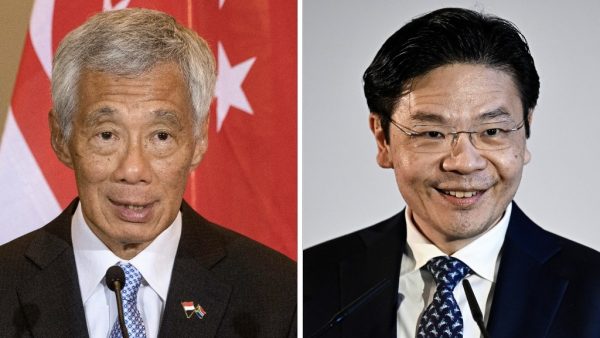US-China trade row seen to help conclude RCEP by year end

The escalating trade war between the US and China may help drive a conclusion to the negotiation of the Regional Comprehensive Economic Partnership (RCEP) free trade agreement to ensure smooth operation of the international supply chains.
Trade ministers from China, India, Japan, South Korea, Australia, New Zealand and the 10 ASEAN member states met in Beijing last weekend for the latest round of RCEP which, if successful, will result in the world’s largest trade bloc.
The ministers confirmed their commitment to concluding the talks by the year end and signing the agreement in 2020 and are scheduled to meet again in Bangkok next month.
The RCEP meeting was held amid an intensifying trade war as the US President Donald Trump announced additional tariffs on USD300 billion of Chinese goods, triggering retaliatory measures from China. Moreover, a war of words between Japan and South Korea erupted.
Countries hope that RCEP may provide a forum for members to ease tensions and ensure smooth continuity of regional supply chains amid growing geopolitical tensions.
Thailand’s Commerce Minister, Jurin Laksanawisit, described the outcome of the talks as “a good sign”. In a joint statement, the representatives of negotiating countries expressed satisfaction over the progress of the RCEP talks, saying that over two thirds of market access negotiations have reached mutually satisfactory outcomes.
“Work on remaining areas is being intensified through constructive engagements at all levels,” the statement said.
Negotiations on a total of seven chapters and three annexes have already been concluded, while remaining chapters or annexes near conclusion. Recently concluded annexes include telecommunications, financial and professional services.
Thailand’s Trade Negotiations Department Director General, Oramon Sapthaweetham, said the RCEP agreement should provide additional benefits to Thailand’s exporters, on top of existing free trade agreements.
For examples, Thai exporters should be able to ship more machinery, electrical appliances, plastics, chemicals, autos and parts, tires, fibre, apparel, tapioca and paper to other RCEP countries. Additionally, RCEP should lead to clearer trade and investment regulations.
The agreement should also encourage Thai investors to invest in other RCEP countries, in areas where Thailand has strong expertise, such as in construction, retail, health-related businesses as well as the movie and entertainment industries, especially in post-production and animation.
It will support Thailand’s inspiration to upgrade its S-Curve industries to realise the Thailand 4.0 scheme, she added.
Nonetheless, future talks may find that the devil is in the details. Some countries, like India, are still reluctant to accept RCEP trade liberalization, fearing of an influx of Chinese goods.
RCEP is intended to cover a wide range of issues from trade and investment to services, as well as new areas of business such as electronic commerce. Late last month, the Thai Cabinet gave trade negotiators a mandate to negotiate the intellectual property issue in RCEP.
Thailand’s civil society earlier expressed worries that the prospective agreement could become a double-edged sword, because RCEP will also open up the Thai market to goods and services, as well as strengthen the intellectual property protection for products from other RCEP nations.
Mr. Aat Pisanwanich, Director of the Centre for International Trade Studies at the University of the Thai Chamber of Commerce, urged the Thai government to examine the details of RCEP trade liberalization carefully before agreeing to sign it.
Regional trade conflict
Uncertainty surrounding the trade war between the US and China and the recent spat between Japan and South Korea may encourage members to push RCEP forward because the multinational trade agreement can at least guarantee market access among its member countries.
Mr. Boonyarit Kalayanamit, Permanent Secretary at Thailand’s Ministry of Commerce, said that, amid escalating trade disputes, the early conclusion of the agreement is essential to provide a tool to encourage a conducive environment for sustainable expansion of 16 national economies.
In 2018, RCEP countries accounted for 47.4% of the global population, 32.2% of the global economy, 29.1% of global trade and 32.5% of global investment flows.
RCEP members include Thailand’s major trading partners and active outbound shipments from Thailand to these countries include automobiles, plastics and parts, refined petroleum, computers, chemicals rubber products, machinery and iron.
RCEP may not significantly lower tariffs for ASEAN countries, because ASEAN countries already have individual trade agreements with six non-ASEAN countries. RCEP, however, can help lower trade barriers among the six non-ASEAN countries, strengthening the regional supply chains.
For example, at present, Chinese apparel and bags are subject to around 9.1-10.8% tariffs in the Japanese market. South Korea’s tobacco and plastics are subject to a tariff of 4.3-6.5% in Japanese market.
Japanese semiconductors, automotive and plastic exports are subject to a tariff of between 0.3% – 8% in South Korea. Meanwhile, Chinese mobile phones are subject to 0.4% tariffs in India, while Chinese television exports to India are subject to an 8.3% tariff.
If these tariff rates are lowered by RCEP, it would boost regional supply chains and indirectly benefit Thai exports.






